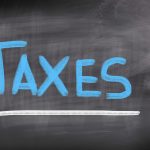Scottish Tax Changes
The Devolution vote is over, and the Scots have had their say on the future governance of their country. As part of the promised repatriation of many new powers, the Smith Commission is looking into which government responsibilities should be devolved back to Holyrood.
Among the recommendations from the report was giving Scotland complete control of its own income tax rates and bands. Similarly Air Passenger Duty should be under the governance of the Scottish Parliament, along with a slice of VAT receipts from across the UK.
The majority SNP party has not been wholly welcoming of the recommendations however. First Minister Nicola Sturgeon argued that, “70% of our taxes continue to be set at Westminster, 85% of social security controlled at Westminster – this parliament responsible for less than half of the money we will spend.”
Changes are afoot
There are a however a small changes of tax regulations that are definitely going ahead. First up is the abolition of Stamp Duty on properties North of the Border. From April 2015, property in Scotland will be subject to a new ‘Land and Building Transaction Tax’ (LBTT).
LBTT has been designed to reduce price ‘bunching’ of property by introducing a number of bands, further subdivided by commercial and residential property type. Homes sold for less than £150,000, or commercial properties under £135,000 will attract no tax at all. At the other end of the spectrum, Homes worth more than £350,000 will be taxed at 4.5%. At the extreme, commercial properties worth over £1,000,000 will attract a 12% tax.
Clearly LBTT has significant implications for businesses who need to sell property, either as a cost-cutting, consolidation measure, or to allow for a move to larger premises. The changes may be slight, but they will certainly have an impact that needs to be considered.
The new Scottish Rate of Income Tax
Slightly further ahead, 6 April 2016 will see the introduction of a new Scottish Rate of Income Tax (SRIT). These new rules allow the Scottish Treasury to “replace 10p out of each tax band” with SRIT. SRIT must be operated within the tax bands and personal allowances set by Westminster however.
There are two particularly interesting factors to SRIT. First the levy must be applied equally at every tax band – if SRIT is set at 10p for the lower tax bands, it must also be set at 10p for higher tax rate payers. Secondly, SRIT is applied to all Scottish residents, including pensioners who are now defined as “Scottish taxpayers” under the new regime.
As things currently stand, tax rates in Scotland will remain the same as the rest of the UK – 20%, 40% and 45% – with a portion of the income sent directly to the Scottish Treasury. If SRIT is increased however, Scottish income tax will increase also. Setting SRIT to 15p for example could see tax rates also increase to 25%, 45% and 50% respectively.
The devolution of powers to Scotland is an ongoing process. However as these Scottish tax changes clearly demonstrate, there is already set to be some significant changes for business and personal finances.




